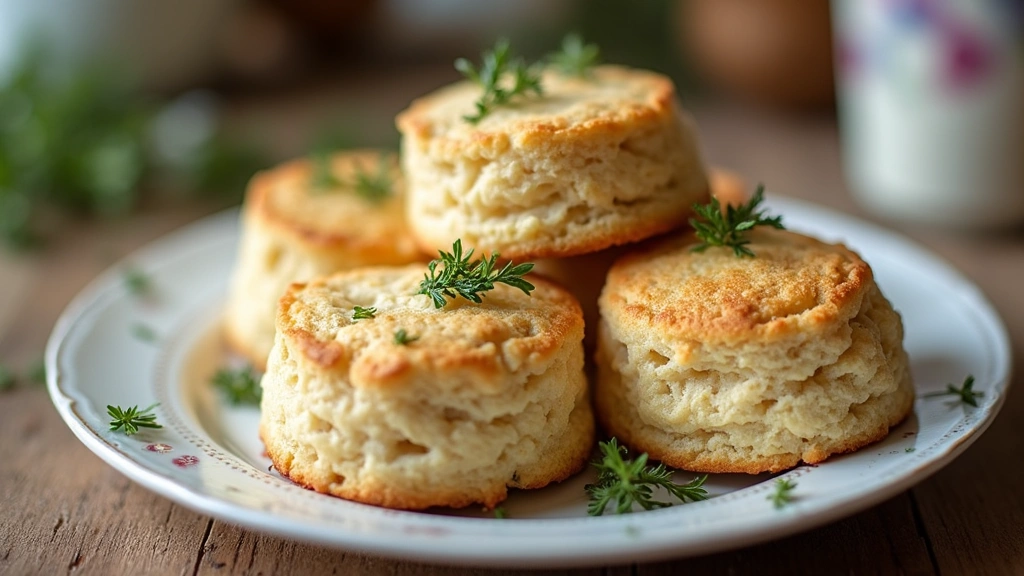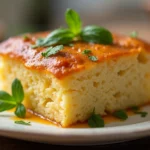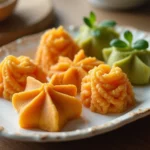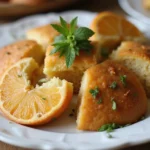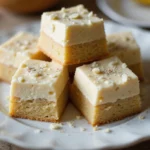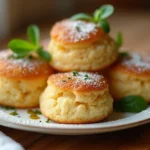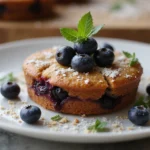Scones are the quintessential accompaniment to tea, embodying the elegance and comfort of British culture.
With a flaky exterior and a tender crumb, they offer a delightful contrast that pairs beautifully with clotted cream and jam.
I fondly remember enjoying freshly baked scones during afternoon tea at a quaint café in London, where the aroma filled the air and created an inviting atmosphere.
Whether for a special occasion or a cozy afternoon treat, these easy baking scone recipes will impress your guests and elevate your tea time experience.
The History and Cultural Significance
• Baking scones traces its origins to the early 16th century in Scotland, where they were originally made with oats rather than wheat flour.
• The dish evolved over decades as British culinary practices spread, incorporating wheat flour and various flavorings like fruits and spices, eventually becoming the beloved version we know today.
• In the United Kingdom, scones traditionally appear at afternoon tea, symbolizing hospitality and refinement.
• While many variations exist across different regions, the authentic version maintains a light texture and buttery flavor that sets it apart from imitations.
Recipe Overview
Nutritional Information (per serving)
Ingredients
Essential Equipment Guide
Mixing Bowl: A sturdy mixing bowl is essential for combining your dry and wet ingredients without spillage. Look for a large capacity, preferably stainless steel or glass, for easy cleaning and durability.
Baking Sheet: A flat, heavy-duty baking sheet ensures even heat distribution, leading to perfectly baked scones. Consider one with a non-stick surface or line it with parchment paper for easy removal.
Pastry Cutter: This tool is crucial for cutting butter into flour to create that desired crumbly texture. If you don’t have one, a fork or your fingers can also do the job, but a pastry cutter saves time and effort.
Preparation Methods
Cutting in Butter: This technique involves incorporating cold butter into the flour mixture to create a crumbly texture. Use a pastry cutter or your fingers to work the butter until it resembles coarse crumbs. This is crucial for the lightness of your scones, so be careful not to overwork the mixture.
Folding Dough: Folding is a gentle method of combining ingredients without over-kneading the dough. It helps maintain the airiness needed for fluffy scones. Use a spatula to lift and fold the dough over itself, rotating the bowl as you go.
Chilling Dough: Chilling the dough before baking allows the butter to firm up, which results in a better rise during baking. Wrap the dough in plastic wrap and refrigerate for at least 30 minutes before shaping.
Step 1: Prepare Ingredients
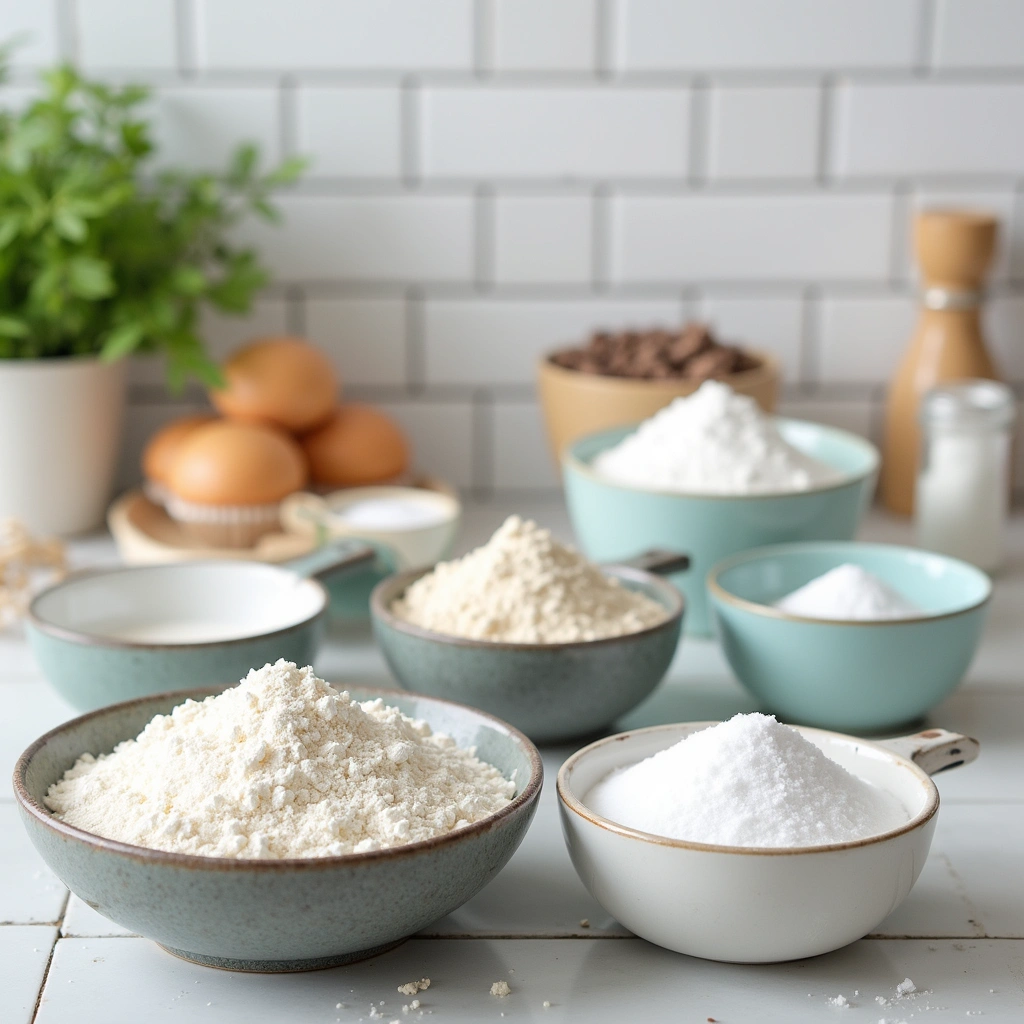
Gather all the ingredients on your countertop.
Measure out the flour, sugar, baking powder, and salt into a mixing bowl.
Make sure to sift the flour to avoid lumps.
This step ensures that everything is ready to go for a smooth preparation process.
Step 2: Cut in Butter
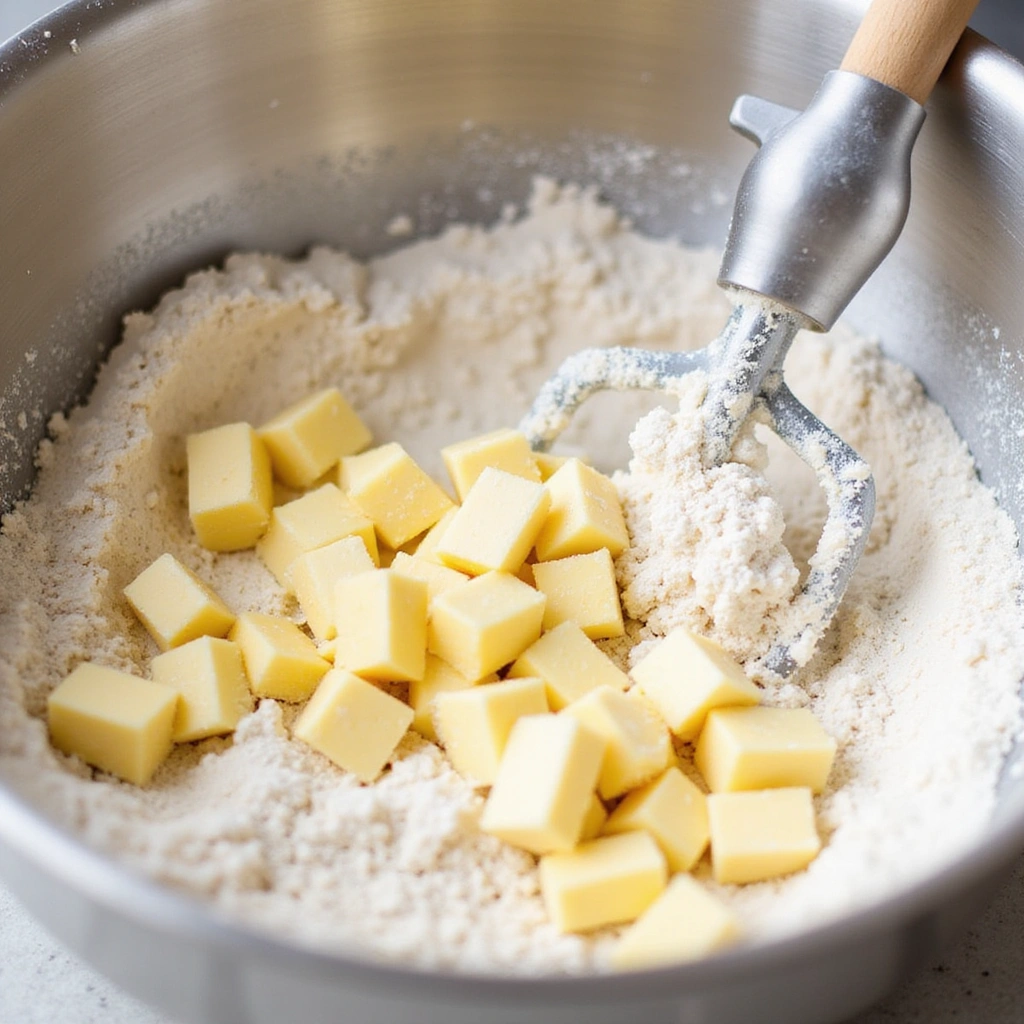
Add the cold butter cubes to the flour mixture.
Using a pastry cutter, cut the butter into the flour until it resembles coarse crumbs.
This process is crucial for achieving that flaky texture.
Be careful not to overwork the mixture; you want to see small bits of butter throughout.
Step 3: Add Wet Ingredients
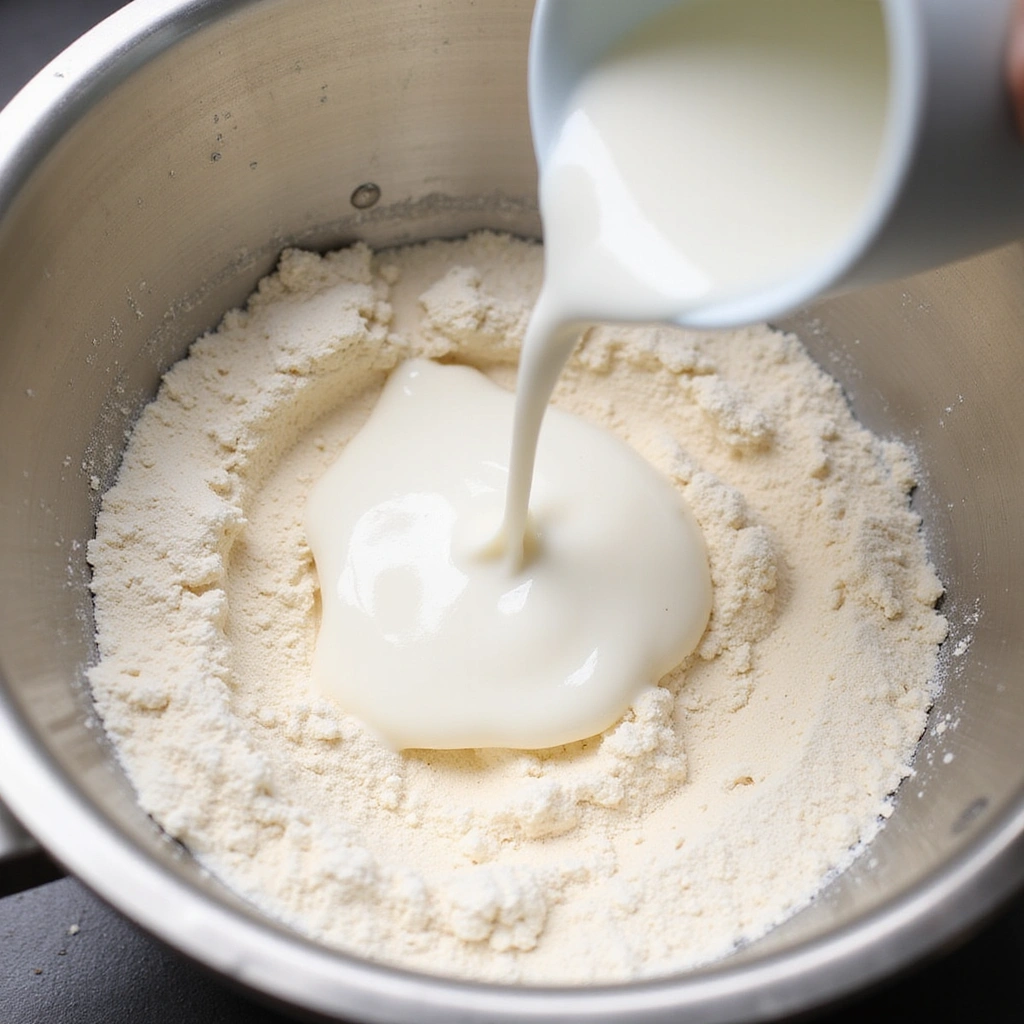
Create a well in the center of the flour mixture.
Pour in the milk and add the vanilla extract if using.
Gently mix until the dough just comes together; do not over-knead.
This ensures the scones remain light and tender.
Step 4: Fold in Flavorings
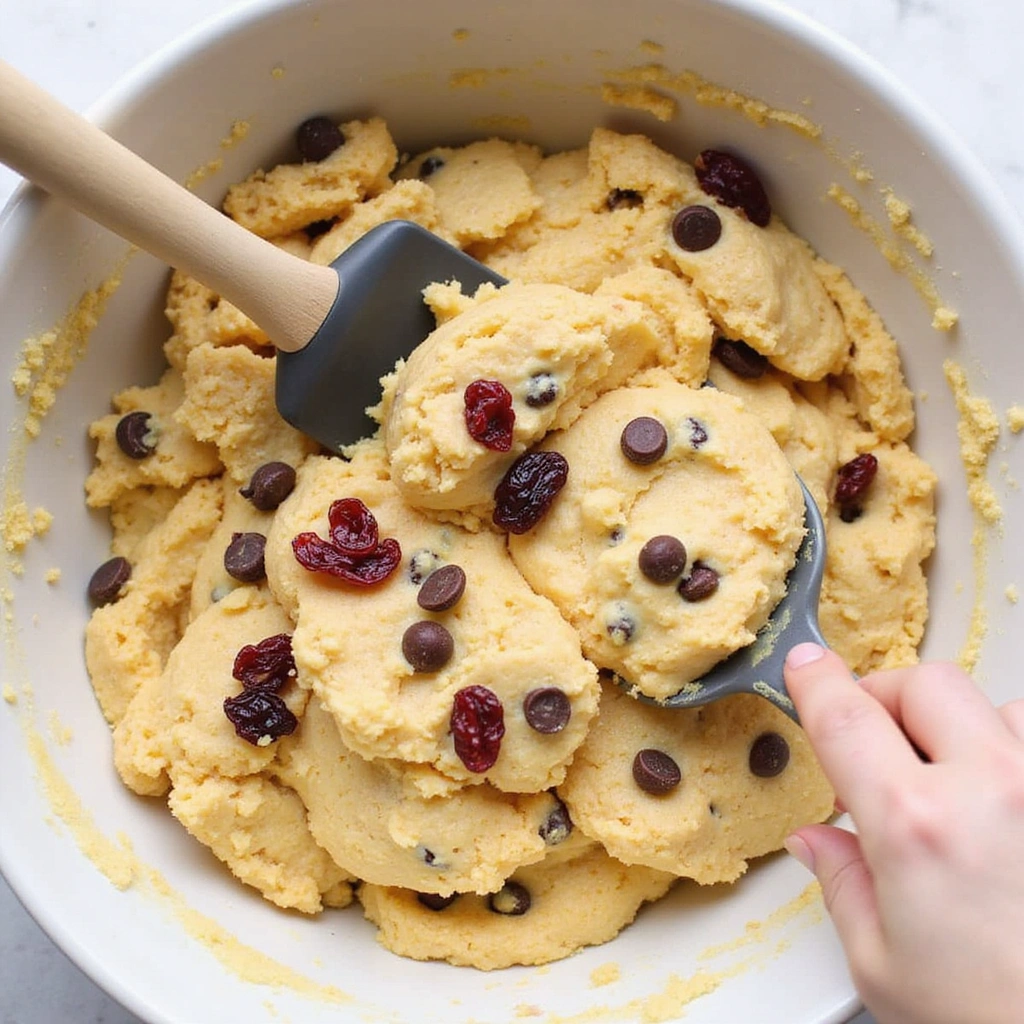
Gently fold in the dried cranberries or chocolate chips using a spatula.
This step adds flavor and texture to your scones.
Be careful to fold, not stir, to maintain the dough’s airiness.
This is key to achieving the perfect scone consistency.
Step 5: Chill the Dough
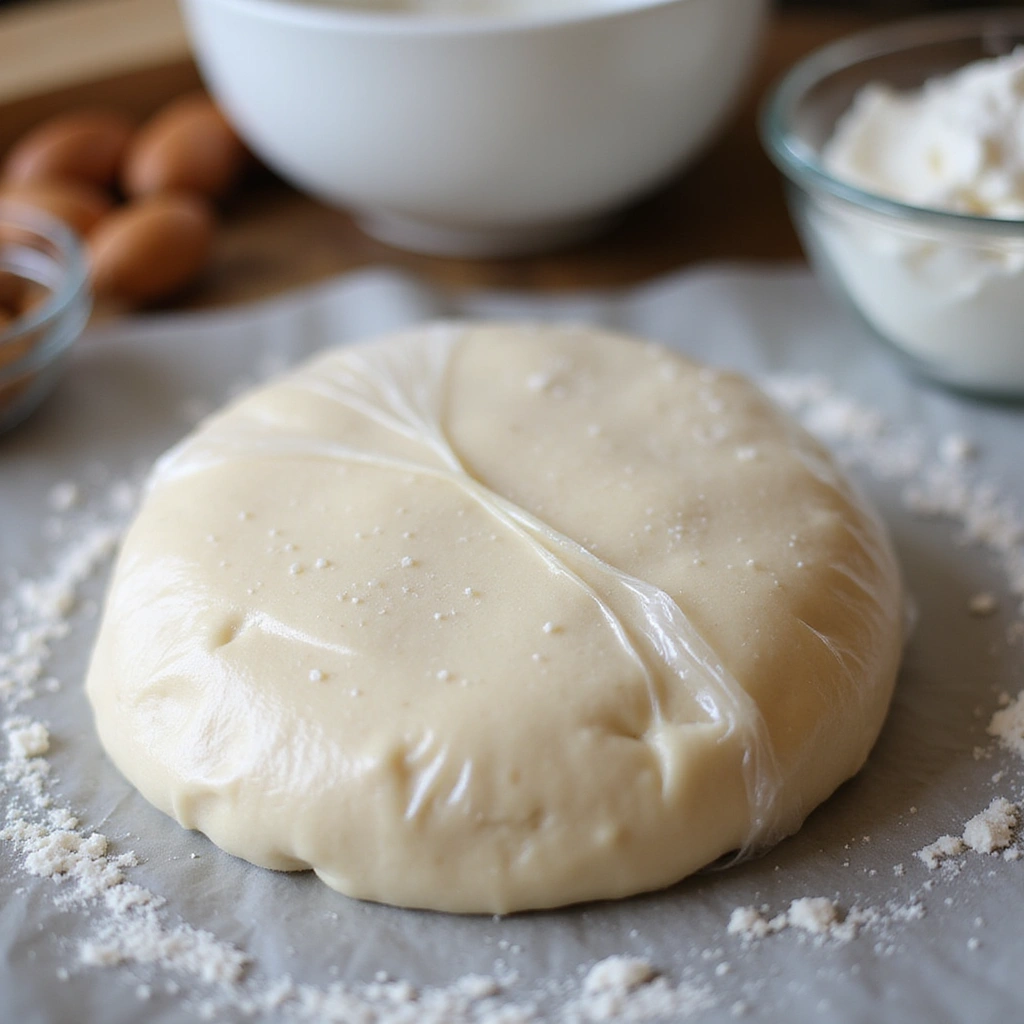
Wrap the dough in plastic wrap and flatten it into a disc.
Refrigerate the dough for at least 30 minutes to firm up the butter.
This step helps improve the rise and texture of the scones during baking.
Make sure it’s well-wrapped to avoid drying out.
Step 6: Preheat the Oven
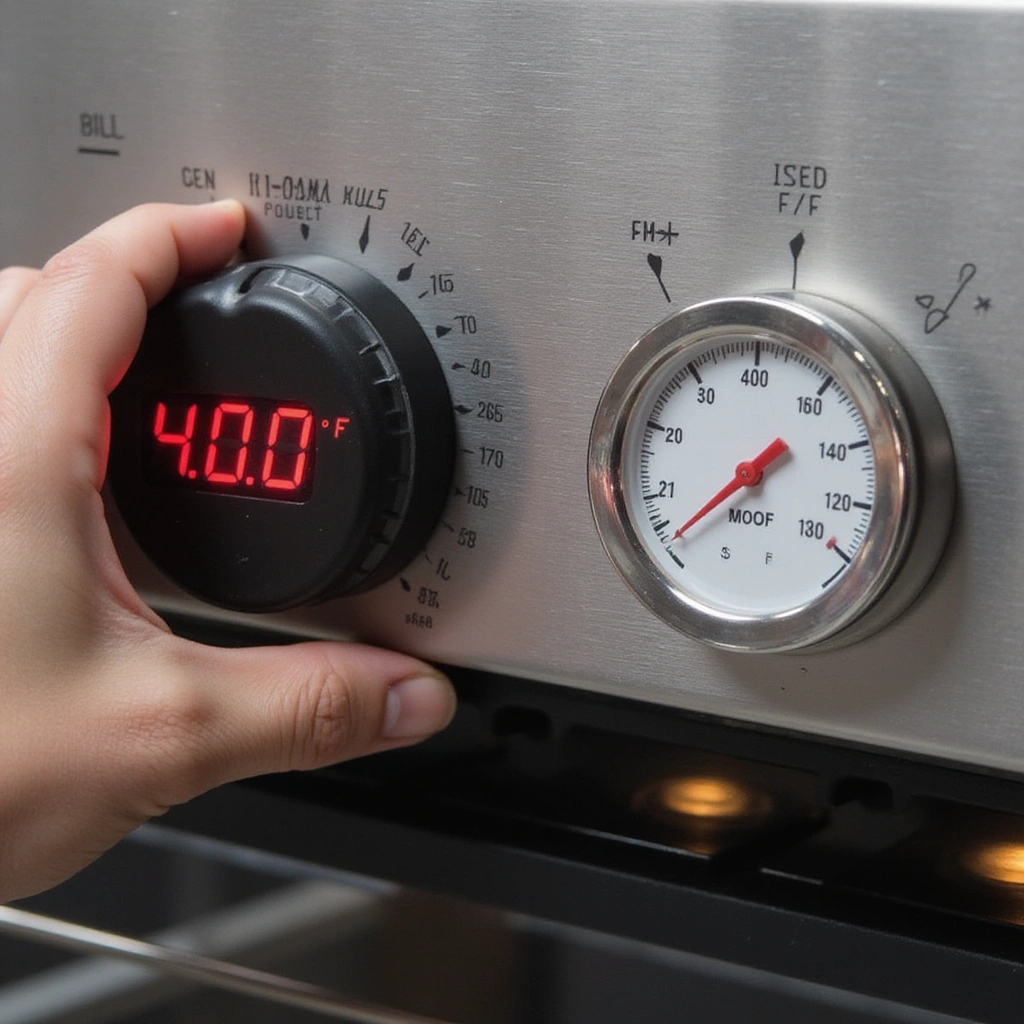
Preheat your oven to 400°F (200°C).
Make sure the oven is fully heated before placing the scones inside.
A preheated oven is essential for proper rising and browning.
Check with an oven thermometer for accuracy.
Step 7: Shape the Scones
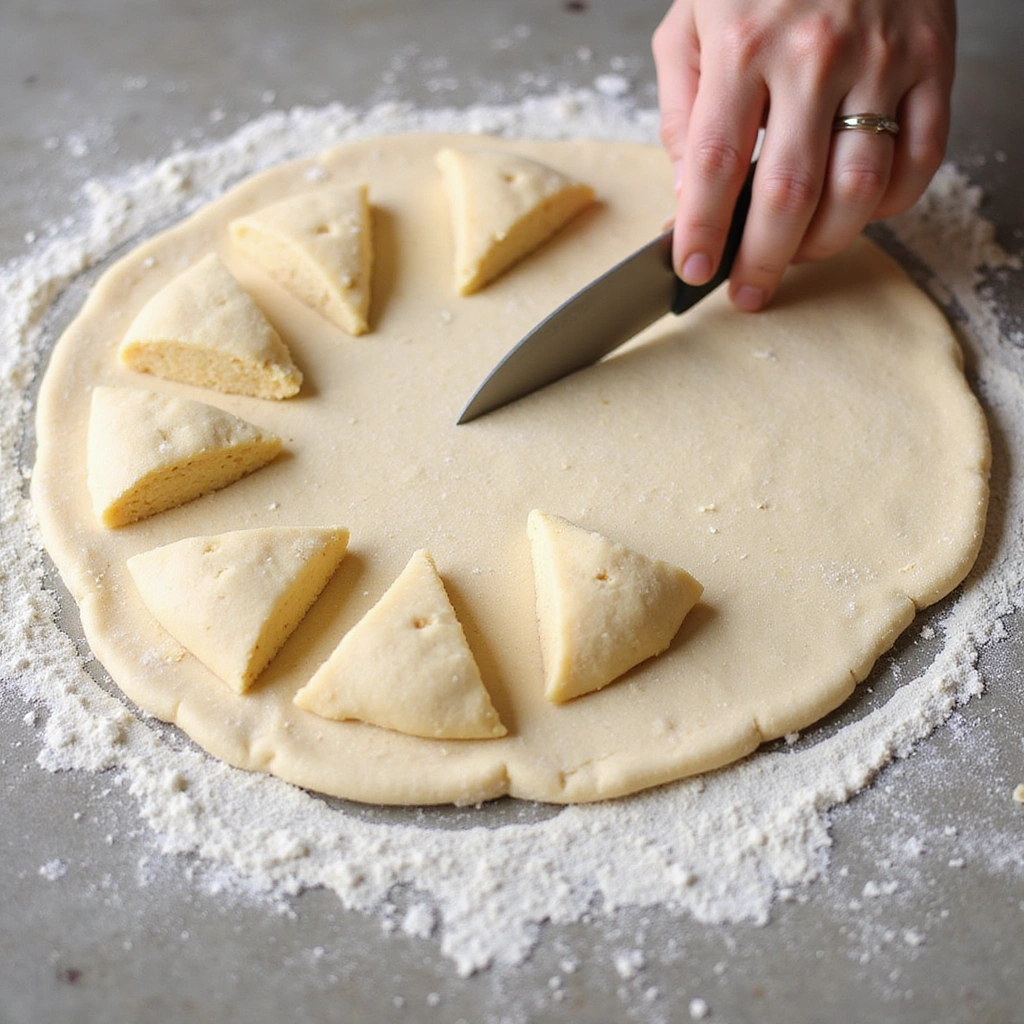
Remove the chilled dough from the refrigerator and place it on a floured surface.
Roll it out to about 1-inch thickness and cut into triangles or circles.
Ensure each piece is of equal size for even baking.
Use a sharp knife or biscuit cutter for clean edges.
Step 8: Bake the Scones
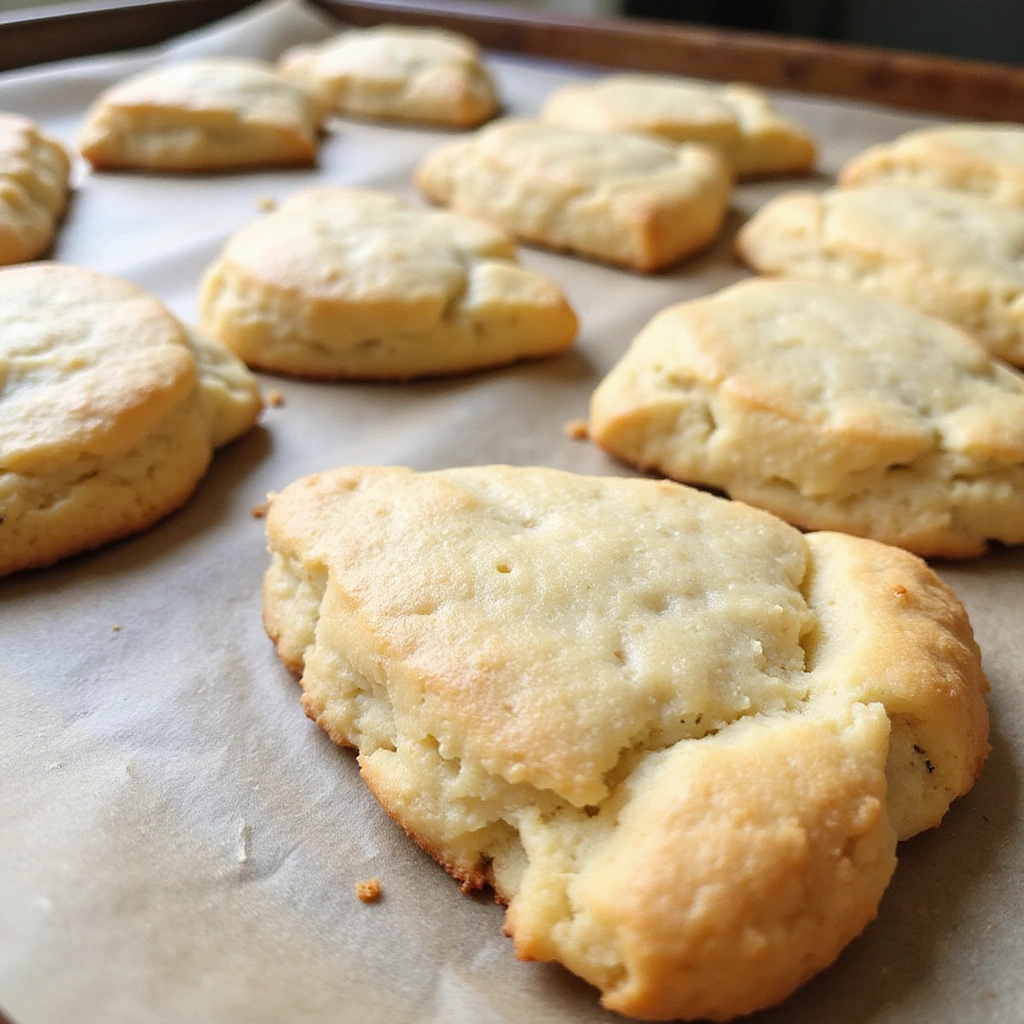
Place the shaped scones onto a baking sheet lined with parchment paper.
Bake in the preheated oven for 15-20 minutes until golden brown.
Look for a slight rise and a golden crust as indicators of doneness.
Avoid opening the oven door too soon to maintain consistent heat.
Step 9: Cool and Serve
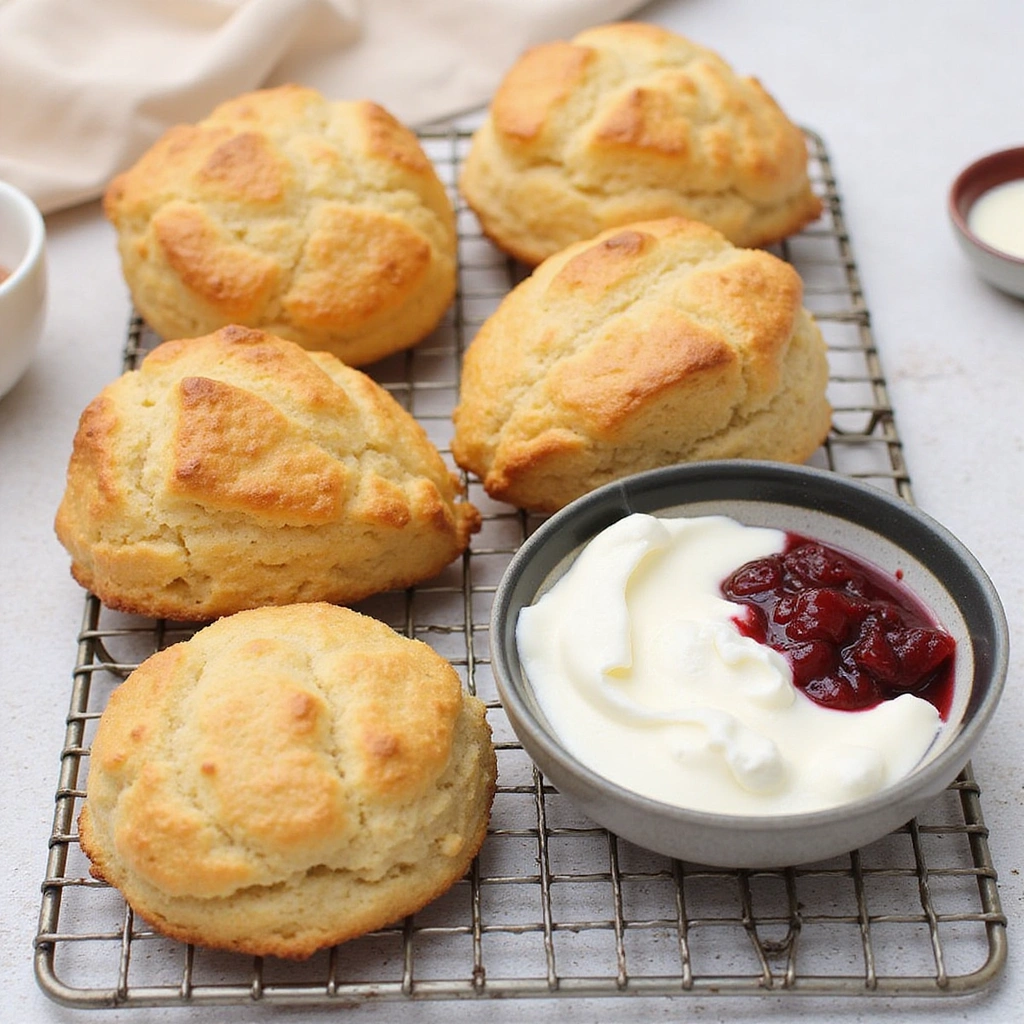
Remove the scones from the oven and allow them to cool on a wire rack.
Wait for about 10 minutes before serving them warm.
Serve with clotted cream and jam for the traditional experience.
This enhances the flavor and gives a lovely presentation.
Critical Timing and Temperature Guide
Chilling the Dough: Chill the dough for at least 30 minutes. This allows the butter to firm up, ensuring the scones rise properly. Common mistakes include skipping this step, leading to flatter scones.
Baking Temperature: Bake at 400°F (200°C) for 15-20 minutes. Look for a golden-brown color and a firm texture. Avoid opening the oven door too frequently to prevent a drop in temperature.
Cooling Time: Allow the scones to cool for 10 minutes after baking. This helps set the texture and makes them easier to handle. Rushing this step can lead to soggy bottoms.
Pro Tips for Baking Scones Recipes For Perfect Tea Time
• Ingredient Selection: Use high-quality butter for the best flavor and texture. The butter should be very cold to create flaky layers.
• Preparation Secret: For an extra tender scone, try incorporating a bit of sour cream or yogurt into the dough.
• Temperature Management: Ensure all ingredients are cold, especially the butter and milk, to maintain the dough’s structure.
• Texture Enhancement: Avoid over-kneading the dough; a gentle fold is all that’s needed to combine ingredients.
• Flavor Layering: Experiment with different extracts or zest for unique flavors, like lemon or almond.
• Make-Ahead Strategies: You can shape the scones and freeze them unbaked. Bake directly from the freezer, adding a few extra minutes to the baking time.
• Restaurant-Quality Finishing Touches: Brush the tops with an egg wash before baking for a glossy finish.
• Equipment Optimization: Use a sharp knife for cutting the scones to ensure clean edges that rise evenly.
Troubleshooting Common Issues
• Texture Too Dense: This can occur if the dough is overworked or too much liquid is added. Recognize it by its heavy feel and lack of rise. To fix it, handle the dough gently and ensure precise measurements.
• Flavors Unbalanced: If the scones taste bland, it may be due to insufficient salt or sugar. Taste the dough before baking and adjust seasoning, but do so sparingly.
• Uneven Baking: This can happen if the scones are placed too close together on the baking sheet. Ensure they have enough space for heat circulation.
• Burnt Bottoms: Often caused by a hot baking sheet. Use parchment paper to prevent sticking and burning.
• Flat Scones: If the scones spread too much, ensure the butter is very cold and check that your baking powder is fresh.
• Too Crumbly: This can indicate too much flour was added. If the dough crumbles, add a touch more liquid to bring it together.
Variations and Regional Differences
• Devonshire Scones: These are richer and often include cream in the dough, creating a denser texture. Served with clotted cream and jam, they are a staple of Devon’s afternoon tea.
• Irish Scones: Typically made with buttermilk and soda bread style, they are slightly sweeter and often contain raisins or currants, giving a softer, cake-like texture.
• Scottish Scones: Often made with oats and sometimes include treacle for added sweetness, these scones are heartier and have a more rustic flavor.
• Modern Interpretations: Today, scones are often made gluten-free or vegan, using alternative flours and plant-based fats while still aiming for that classic texture.
Food Science Behind the Recipe
• Leavening Agents: Baking powder creates carbon dioxide when it reacts with moisture and heat, causing the scones to rise. Understanding the right amount and freshness of your leavening agent can significantly affect the final product.
• Fat Functionality: The cold butter in the dough creates steam when baked, which helps to create flaky layers. The importance of using cold fat cannot be overstated in achieving the perfect texture.
• Gluten Formation: While gluten gives structure, overworking the dough can lead to tough scones. Knowing when to stop mixing is key to achieving that tender crumb.
Frequently Asked Questions
What’s the most common mistake people make when preparing scones? The most common mistake is overworking the dough, which can lead to tough scones. Handle the dough gently and mix just until combined.
Can I prepare components of this dish in advance? Yes, you can mix the dry ingredients and store them in advance. You can also shape the scones and freeze them unbaked for later use.
How do I adapt this recipe for dietary restrictions? For gluten-free scones, substitute all-purpose flour with a gluten-free blend. Adjust the liquid as necessary for consistency.
What’s the best way to store and reheat leftovers? Store scones in an airtight container at room temperature for up to 2 days. Reheat in a low oven for about 5-10 minutes for freshness.
Can I freeze this dish? Yes, freeze the unbaked scones on a baking sheet, then transfer to a bag. Bake from frozen, adding a few extra minutes to the baking time.
What wine or beverages pair best with this dish? A light afternoon tea or sparkling wine complements scones well, enhancing their delicate flavors.
How can I scale this recipe up for a crowd? Simply multiply the ingredients while maintaining the same ratios to ensure consistent results.
What side dishes complement this recipe best? Serve with a variety of jams, clotted cream, or a fresh fruit salad for a balanced tea time experience.
How do professional chefs elevate this dish for restaurant service? Chefs often serve scones with artisanal jams and infused creams, elevating the traditional presentation.
Serving and Presentation Guide
• Traditional Presentation: Scones are typically served on a tiered stand with clotted cream and jam on the side. This showcases the scones and makes for an elegant presentation.
• Modern Plating Ideas: For a contemporary twist, serve scones on a rustic wooden board with a selection of toppings in small bowls, adding a touch of charm.
• Accompaniment Suggestions: Pair with a selection of teas, fruit preserves, and fresh berries to enhance the flavor profile.
• Special Occasion Presentation: For celebrations, drizzle scones with a light icing sugar glaze and garnish with edible flowers for a visually stunning touch.
Conclusion
Baking scones is a delightful experience that brings warmth and joy to any tea time gathering.
I hope you find this recipe as rewarding as I do, filling your kitchen with the wonderful aroma of freshly baked scones.
Don’t hesitate to experiment with flavors and make this recipe your own!
